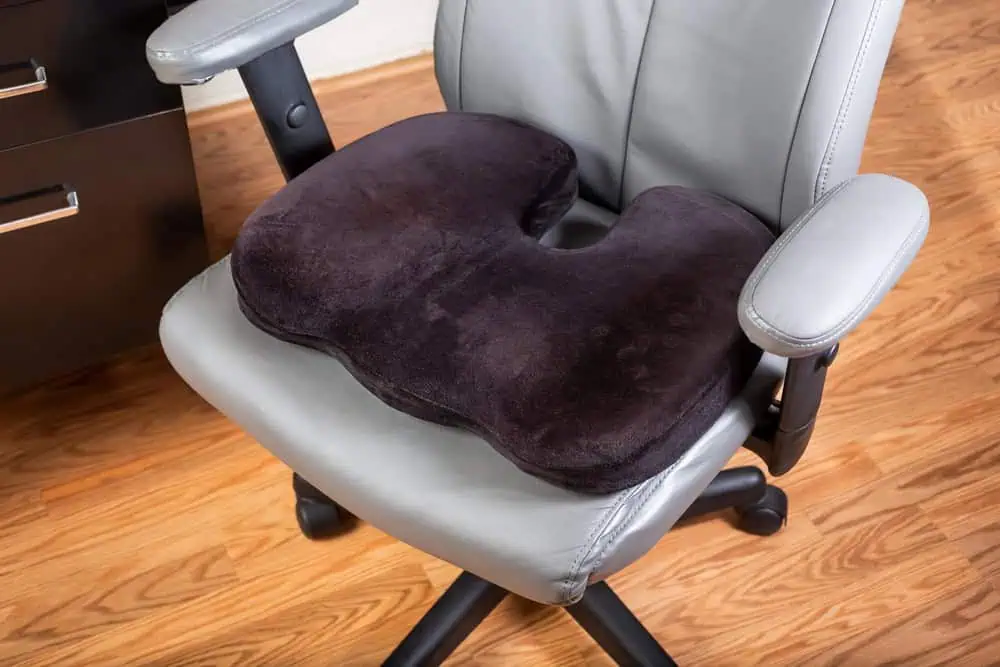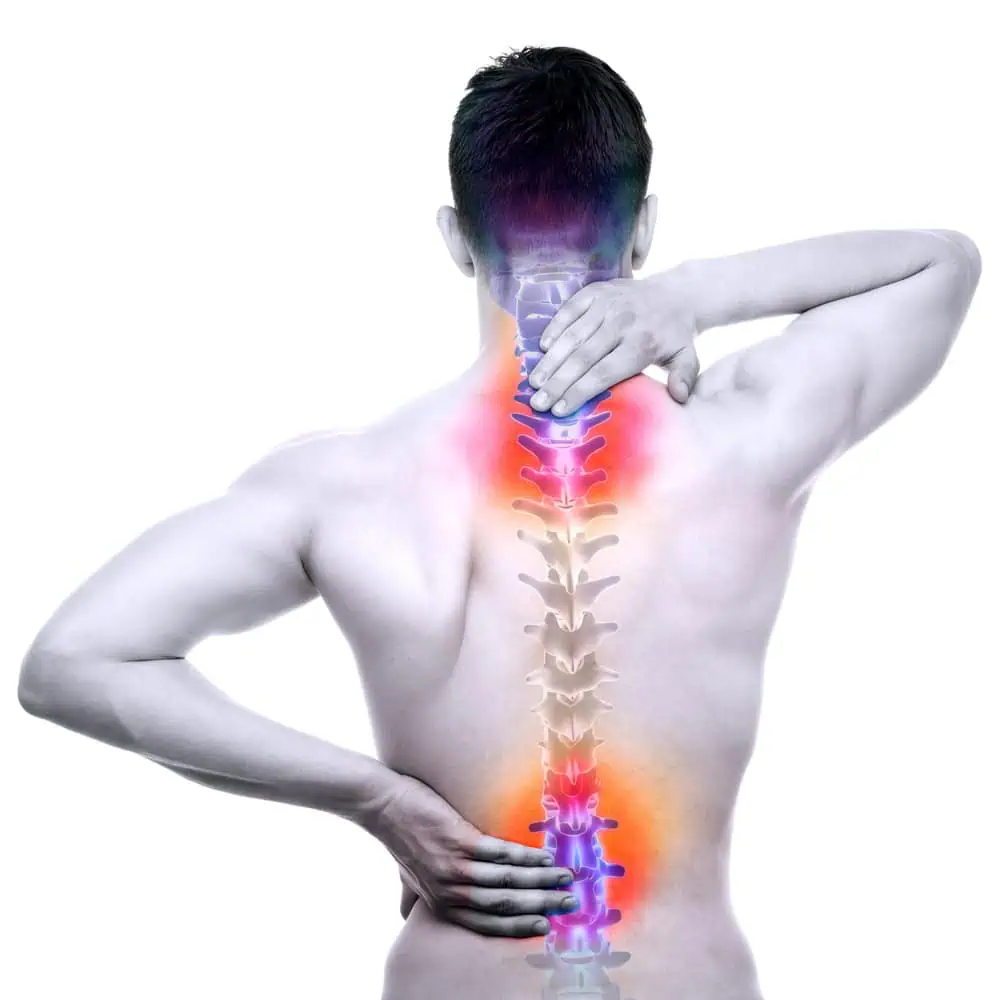Sitting with SI joint pain can be a daily challenge for those affected by this condition. It’s paramount that we identify seating positions and strategies that not only minimize discomfort but also support the health of our SI joints. By understanding the symptoms and how our posture impacts those sensitive areas, we can make simple yet effective changes to our sitting habits. This includes selecting proper seating, using cushions for support, and incorporating gentle stretches throughout the day to maintain joint mobility and reduce pain.
We must also be aware of the importance of movement and exercise in managing SI joint pain. It’s not just about finding a comfortable position; it’s about creating an environment that encourages the strengthening and flexibility of our supporting musculature. With non-surgical treatment options available, we are empowered to take control of our SI joint pain through a combination of mindful practices and professional guidance. Now, let’s summarize the core takeaways from the article.

Key Takeaways
- Adopting proper posture and support can alleviate SI joint pain while sitting.
- Regular stretches and exercises strengthen the muscles supporting the sacroiliac joints.
- Professional assessment and non-surgical treatments are effective in managing SI joint symptoms.
Understanding SI Joint Pain
In addressing sacroiliac (SI) joint pain, it’s essential for us to grasp the joint’s anatomy, the common causes of pain, the symptoms to look out for, and how professionals diagnose the condition. By knowing these key areas, we can better manage and find relief for SI joint discomfort.
Anatomy of the SI Joint
The SI joint connects the spine to the pelvis, specifically where the sacrum—the triangular bone at the base of the spine—meets the ilium bones of the pelvis. This joint is reinforced by a network of ligaments and muscles that provide stability and facilitate a limited range of motion, primarily acting as a shock absorber between the upper body and hips.
Causes of SI Joint Pain
Several factors can lead to SI joint pain, including:
- Pregnancy: The expansion of the pelvis during pregnancy can put additional stress on the SI joints.
- Injury: Impact from falls or car accidents can directly affect the SI joints.
- Arthritis: Conditions like osteoarthritis, ankylosing spondylitis, or psoriatic arthritis may target the SI joints.
- Repetitive stress and prolonged sitting may alter the normal movement of the joint, leading to discomfort.
Symptoms of SI Joint Pain
Common symptoms signaling issues with the SI joint include:
- Persistent pain in the lower back, buttocks, or even radiating into the thigh, groin, or upper back.
- Inflammation may cause swelling around the joint.
- Stiffness or a burning sensation in the pelvis that can affect movement.
Diagnosing SI Joint Pain
To properly diagnose SI joint pain, healthcare providers may:
- Conduct a physical examination to assess the range of motion, and check for pain and tenderness.
- Review abnormal walking patterns or the presence of flares due to injury or inflammation.
- Recommend imaging tests like X-rays or MRIs if an infection or significant injury is suspected.
- Possibly refer you to a physical therapist to identify movement issues contributing to pain.
In managing SI joint pain, an accurate diagnosis is a foundation for effective treatment strategies.
Posture and Sitting Strategies
Adopting the correct posture is crucial for managing SI joint pain during extended periods of sitting. Our focus is on reducing strain on the SI joint through proper alignment of the pelvis, lumbar support, and the use of ergonomic sitting accommodations.

Proper Sitting Posture
Maintaining good posture is paramount when coping with SI joint pain. Sit upright with your back straight; your pelvis should not tilt forward or backward. Ensure the natural curve of your lumbar spine is supported, either by the chair’s design or with the aid of a lumbar support cushion. Your hips and knees should be at a 90-degree angle, with feet flat on the floor to promote spinal alignment. These small changes can really help when sitting with SI joint pain.
Choosing the Right Chair
An ergonomic chair plays a vital role in sustaining proper posture. Select a chair that provides adequate lumbar support, can accommodate the natural curve of your spine, and promotes comfort for your hips and buttocks. The chair’s height should allow your thighs to be parallel to the floor with your feet resting flat. Options such as memory foam seats can enhance support and comfort.
Sitting Position Modifications
Modifying your sitting position can aid in managing SI joint discomfort. Consider using a cushion or pillow to support your pelvis and alleviate pressure on the SI joint. If crossing your legs is habitual, aim to keep your hips even by placing both feet on the floor. Alternating the crossed leg throughout the day can also help distribute the load on your hips and pelvis more evenly.
Importance of Taking Regular Breaks
Incorporating frequent breaks into your routine is necessary to mitigate the intensity of SI joint pain. Try to stand up and move every 30 minutes to encourage blood flow and relieve pressure on the pelvis and lumbar region. This consistent movement can also aid in preserving spinal mobility and reducing stiffness.
Transitions Between Sitting and Standing
When transitioning from sitting to standing, take care to avoid sudden movements that may exacerbate SI joint pain. Shift to the front of your seat, align your feet beneath your knees, and rise using the strength in your legs while keeping your back straight. Utilizing a standing desk may offer an alternative to sitting throughout the day, allowing for movement variability and relief for your pelvis and lower back.
Sitting While Traveling
Travel can be one of the more testing scenarios for managing SI joint pain due to limited movement opportunities. If you’re traveling by plane or car, consider bringing a lumbar support pillow or cushion for additional comfort. Aim to stand up and stretch your legs, pelvis, and lower back whenever feasible, such as during layovers or rest stops. Selecting aisle seats can give you easier access to stand and move around when it’s safe to do so.

Effective Exercises and Stretches
In managing SI joint pain, we emphasize targeted exercises and stretches that specifically address the muscles supporting our pelvis, hips, and lower back to improve stability and alleviate discomfort.
Stretches for SI Joint Pain Relief
For immediate relief from SI joint pain, certain stretches can be very effective. These movements can loosen the muscles around the sacroiliac joint, reducing tension and pain.
- Knee-to-Chest Stretch: Lying on your back, pull one knee towards your chest and hold for 30 seconds. Repeat with the other leg. Detailed instructions for this stretch can be found on Healthline.
- Figure-Four Stretch: While seated, cross one ankle over the opposite knee and gently lean forward. Hold for 30 seconds, then switch sides.
Strength Exercises for SI Joint Stability
To enhance SI joint stability, incorporating strength exercises that focus on the core, hips, and glutes is key.
- Bridges: Lie on your back with your knees bent, feet flat on the floor, and lift your hips toward the ceiling. Hold for a few seconds before lowering back down.
- Bird-Dog: Begin on hands and knees, extend one arm and the opposite leg, hold, then switch sides. This promotes core stability, crucial for supporting the SI joint.
Low-Impact Exercises for Joint Health
Low-impact exercises maintain joint health without exacerbating SI joint pain, and include activities that do not put excessive strain on the pelvis.
- Swimming: This activity increases blood flow without putting pressure on the joints. For those without pool access, walking is an excellent alternative.
- Stationary Biking: Offers cardiovascular benefits while being gentle on the SI joints.
Exercise Precautions
When engaging in exercises, we need to be cautious:
- Monitor pain levels and avoid any movement that causes sharp or increasing pain.
- Maintain proper form to prevent undue stress on the SI joint.
- Gradually increase the intensity of your exercise routine to prevent injury.
When to Avoid Certain Exercises
There are situations when we should refrain from certain exercises:
- If you experience flares of inflammation, it’s advisable to avoid high-impact activities like running or heavy lifting, as they can worsen symptoms.
- During periods of acute pain, focus on gentle stretching and avoid strenuous exercises until symptoms improve.
Lifestyle Adjustments
In managing SI joint pain, we consider how daily activities can be adapted, how we can optimize our sleep environment, and how proper management of weight and diet contributes to overall well-being.
Adapting Daily Activities
We adjust our movements during daily activities to mitigate SI joint pain. This involves maintaining a proper posture when walking, sitting, or bending, and using correct techniques when lifting objects. For instance, when we lift, we keep objects close to our body, bend our knees, and avoid twisting our backs to prevent any undue stress on the SI joint. Similarly, minimalizing activities that involve prolonged climbing of stairs can also help manage pain levels.

Sleeping with SI Joint Pain
A restful sleep is vital when we have SI joint pain, so adapting our sleeping environment is key. We ensure the mattress is supportive and comfortable, and sometimes a cushion between our knees or under our abdomen can maintain spinal alignment. We might even consider the firmness of the pillow to ensure our neck is properly supported, keeping the spine in a natural position to reduce SI joint pain during sleep.
Managing Weight and Diet
Our weight and diet can influence SI joint pain due to the relationship between obesity, nutrition, and inflammation. We aim for a balanced diet rich in anti-inflammatory foods to help reduce pain and avoid excess stress on the joints. Maintaining a healthy weight through a nutritious diet and appropriate exercise can alleviate some of the pressures exerted on the SI joint, which can be exacerbated by obesity.
Non-Surgical Treatment Options
In managing SI joint pain without surgery, we prioritize methods that alleviate pain and reduce inflammation effectively. Our approach encompasses medications, targeted physical therapy, and the application of heat and cold to manage discomfort.

Medication for Pain Management
For immediate pain relief, we often recommend nonsteroidal anti-inflammatory drugs (NSAIDs) like ibuprofen. These medicines help in reducing the joint inflammation and swelling that typically cause pain in the SI joint. In more severe cases, a steroid injection may be administered to directly target inflammation within the joint, offering potentially longer-lasting pain relief.
Physical Therapy Techniques
We incorporate physical therapy to improve the strength and flexibility around the SI joint, enhancing the range of motion. It’s crucial in preventing further episodes of pain. Techniques may include:
- Stretching exercises: to maintain joint flexibility and reduce tension.
- Strengthening exercises: focusing on core, pelvic, and lower back muscles.
This structured approach helps stabilize the SI joint and reduces the risk of future inflammation and pain.
Heat and Cold Therapy
To further manage inflammation and pain, we advise alternating between heat therapy and ice treatment:
- Heat therapy: Applied to relax tight muscles and alleviate discomfort.
- Cold therapy: Used to reduce acute inflammation and swelling immediately following an aggravation of SI joint pain.
By switching between warmth to soothe and cold to dull pain and reduce swelling, we can effectively manage the symptoms associated with SI joint pain.
Understanding and Managing Flare-Ups
In our journey with SI joint pain, it’s imperative for us to recognize the signs of a flare-up and have an arsenal of effective coping strategies to manage the discomfort.
Recognizing SI Joint Pain Flares
Flare-ups are episodes of increased intensity of SI joint pain, often distinguished by a sharp or stabbing sensation that may radiate from the hips to the lower back. We may notice an escalation in pain after prolonged sitting or standing, during certain movements, or without any apparent trigger, indicating our SI joints are inflamed. Awareness of these signs enables us to respond with appropriate measures to alleviate discomfort.
Coping Strategies During Flares
When dealing with a flare-up, it’s crucial to apply heat therapy to the affected area to help reduce inflammation and ease pain. While it may be instinctive to remain inactive, gentle stretching can aid in maintaining flexibility and reducing tension in the muscles surrounding the SI joint. Remember, it’s critical to take frequent breaks from prolonged positions that exacerbate SI joint pain. During these breaks, engage in light movement to improve blood flow and prevent stiffness.
Surgical Treatments and Recovery
When we consider surgical options for sacroiliac (SI) joint pain that does not respond to conservative treatments, it is essential to understand the specific procedures involved and the recovery journey. Here we’ll discuss when surgery may be necessary, what SI joint fusion surgery entails, and what to expect during the rehabilitation process.
Indications for SI Joint Surgery
SI joint surgery is typically reserved for cases where patients experience severe pain from SI joint dysfunction that has not improved with non-surgical treatments such as physical therapy or injections. Surgical intervention is considered when pain impacts our quality of life and ability to perform daily activities.
Understanding SI Joint Fusion Surgery
SI joint fusion aims to provide stability by eliminating movement at the SI joint, thus reducing or alleviating pain. This procedure involves securing the ilium and sacrum together, often using implanted screws or rods. We must be aware that SI joint surgery may help severe cases of SI joint pain that hasn’t improved with more conservative treatment.
Post-Surgery Rehabilitation
Recovery from SI joint surgery involves a structured rehabilitation plan which typically includes limited movement initially to allow the area to heal. Gradually, physical therapy is incorporated to strengthen the surrounding muscles and improve flexibility. Post-surgery exercises are crucial for regaining function and preventing future issues. It’s important for us to follow the recovery plan closely for optimal results. The recovery expectations for SACROILIAC JOINT FUSION have been detailed by spine-health experts, including the use of implanted screws or rods and potential bone grafts across the joint.
Preventing SI Joint Pain
When dealing with SI joint pain, maintaining proper posture is crucial. We should ensure that our lower backs are supported when sitting, preferably with the use of lumbar support pillows, and that our knees are at a 90-degree angle with feet planted firmly on the ground.
Incorporating targeted exercises such as the seated cat-cow can strengthen the muscles around the SI joint, providing enhanced stability. It’s also beneficial for us to engage in activities that bolster the ligaments surrounding our SI joints, acting as natural shock absorbers.
Here are a few principles we ought to follow to prevent SI joint pain:
- Exercise Moderation: Avoid intense or high-impact activities that may strain the SI joint.
- Warm-Up: Always take time for a proper warm-up to prepare our muscles and ligaments for activity.
- Strengthen Core: Focus on strengthening core muscles, which serve as a support system for our SI joints.
For those of us with hypermobility, it’s important to avoid stretching too far and to reinforce exercises that enhance joint stability. If an injury occurs, we must give our bodies the chance to heal, potentially seeking medical advice to guide us through appropriate recovery exercises.
Lastly, taking regular breaks from sitting to stand or stretch can alleviate and prevent stress on the SI joint. We should strive to distribute our weight evenly when transitioning between standing and sitting to avoid aggravating any sensitivity in the area.
Potential Complications and Risks
When we discuss the sacroiliac (SI) joint and associated pain, it’s crucial to recognize potential complications and risks that may arise if the condition is not managed properly. Addressing SI joint pain promptly can help mitigate these risks.
- Sciatica: SI joint pain can mimic or contribute to sciatica symptoms, where pain radiates along the sciatic nerve path, through the buttocks and down the leg.
- Arthritis: Prolonged SI joint pain can be an indicator or precursor to different forms of arthritis, including osteoarthritis and inflammatory arthritis.
- Injuries: Ignoring SI joint pain may increase the risk of injuries. Abnormal movement or compensation due to the pain can lead to strain in other areas of the body.
Risk factors to consider include hypermobility, trauma, pregnancy, and prolonged periods of poor posture. These factors can exacerbate the pain and increase the likelihood of developing chronic conditions.
Early intervention is key. By acknowledging these risks, we can take the necessary steps to ensure that minor issues do not escalate into persistent problems that impede daily living.
Preventative Measures:
- Maintain Good Posture: Sit with knees at 90 degrees and feet planted on the floor.
- Regular Exercise: Gentle stretching and strengthening exercises can support the muscles around the SI joint.
- Mindful Movement: Being aware of body mechanics is important to avoid further aggravating the SI joint.
Understanding these risks equips us with the knowledge to avoid long-term damage and manage SI joint pain effectively.
When to See a Doctor
If we’re experiencing severe pain in the sacroiliac (SI) joint that interrupts our daily activities or does not improve with self-care, it’s time to consult a healthcare professional. Especially if a fall or an injury preceded the discomfort, we should seek prompt medical evaluation to diagnose any potential damage to the SI joint or surrounding structures.
Here’s when we should consider scheduling an appointment:
- The pain is sharp, stabbing, and severe.
- Discomfort persists for more than a week despite home remedies.
- A recent injury or fall could be linked to the onset of symptoms.
It’s crucial we keep track of our symptoms to provide the doctor with detailed information. This might include:
- Location and intensity of the pain
- Actions that worsen or relieve the pain
- The duration and frequency of painful episodes
We must remember that persistent or recurring pain could indicate an underlying condition requiring medical intervention. Early diagnosis and treatment often lead to better outcomes. A healthcare provider can prescribe medications, physical therapy, or further diagnostic tests if necessary.
Let’s not hesitate to reach out to a medical professional when the pain becomes disruptive to our life. Our health and well-being should always remain a priority.
Conclusion
As we’ve discussed, managing SI joint pain while sitting involves a combination of proper posture, supportive accessories, and exercises. To recap, remember to:
- Maintain an upright posture with feet flat on the floor and knees at a right angle.
- Use lumbar support to help maintain the natural curve of your lower back.
- Incorporate seated exercises, like the seated cat-cow stretch, for strengthening your core and back muscles.
- Consider footwear that offers good support to reduce strain on your SI joints.
By adhering to these strategies, we can better manage SI joint pain and improve our comfort during seated activities. It may take some experimentation to find what specific methods work best for us, but with consistent effort, we can achieve significant relief.
Frequently Asked Questions
We understand that dealing with SI joint pain can be complex. Below, we provide straightforward answers to common queries on managing this condition effectively.
What are effective self-care strategies for managing SI joint pain at home?
To manage SI joint pain at home, we recommend maintaining proper posture and incorporating gentle exercises to strengthen the muscles supporting the joint. Taking frequent breaks from prolonged sitting or standing also helps alleviate the pain.
What type of seat cushion is recommended to alleviate SI joint pain while sitting?
A seat cushion that provides good support and promotes proper hip alignment is beneficial. A memory foam cushion specifically designed for SI joint pain that prevents slumping can reduce the discomfort while sitting.
How should one position themselves when sleeping to minimize SI joint discomfort?
Sleep on your side with a pillow between your knees to maintain hip alignment, or sleep on your back with a pillow under your knees to relieve pressure on the SI joint.
Are there specific exercises that can help reduce pain in the sacroiliac joint?
Yes, low-impact activities, such as swimming, walking, and yoga, can help strengthen the muscles around the SI joint, reducing pain and improving joint stability.
Which activities should be avoided to prevent aggravating SI joint pain?
It’s best to avoid high-impact exercises, heavy lifting, and prolonged, uneven postures that place excessive stress on the SI joint.
Can sitting with SI joint pain for long periods be damaging, and how can it be mitigated?
Sitting for long durations can exacerbate SI joint pain. Mitigate this by taking regular breaks to stretch and move, using ergonomic chairs, and ensuring proper posture.














